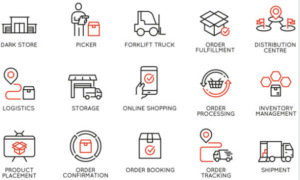Supply chain technology strategy for a major multiple on-line UK supermarket (non-food)
The Situation
The Task
The primary task was to conduct an IT planning assignment aimed at defining the future supply chain technology strategy and warehousing architecture for Tesco Direct’s non-food operations.
This involved identifying key capabilities and opportunities for improving supply chain management execution and multi-channel order fulfilment processes.
The output was intended to inform future solution architecture and software selection, aligned with a detailed business change roadmap.
The Action / Approach
His key actions included:
- Future Supply Chain Technology Strategy Development:
- Conducted analysis and planning to define the future technology strategy for the non-food supply chain and warehousing.
- Capability and Opportunity Identification:
- Identified key capabilities and opportunities for enhancing supply chain management execution and multi-channel order fulfilment processes.
- Alignment with Business Change Roadmap:
- Ensured that the identified capabilities and opportunities could be translated into solution architecture and software selection based on the appropriate timings of a detailed business change roadmap.
- Capability-Based Planning Framework Development:
- Developed a capability-based planning framework that linked business objectives and drivers to specific capability definitions
The Result
His contributions resulted in:
- Defined Future Supply Chain Technology Strategy:
- A clear technology strategy for the non-food supply chain and warehousing architecture was established.
- Identified Improvement Opportunities:
- Key capabilities and opportunities for improving supply chain management and multi-channel order fulfilment were identified, providing actionable insights for future development.
- Framework for Solution Architecture and Software Selection:
- The work laid the groundwork for future solution architecture design and software selection, aligned with the business change roadmap.
- Capability-Based Planning Framework:
- A framework was achieved that provided a structured approach to translating business needs into defined IT capabilities. This framework could be used for ongoing planning and alignment.




